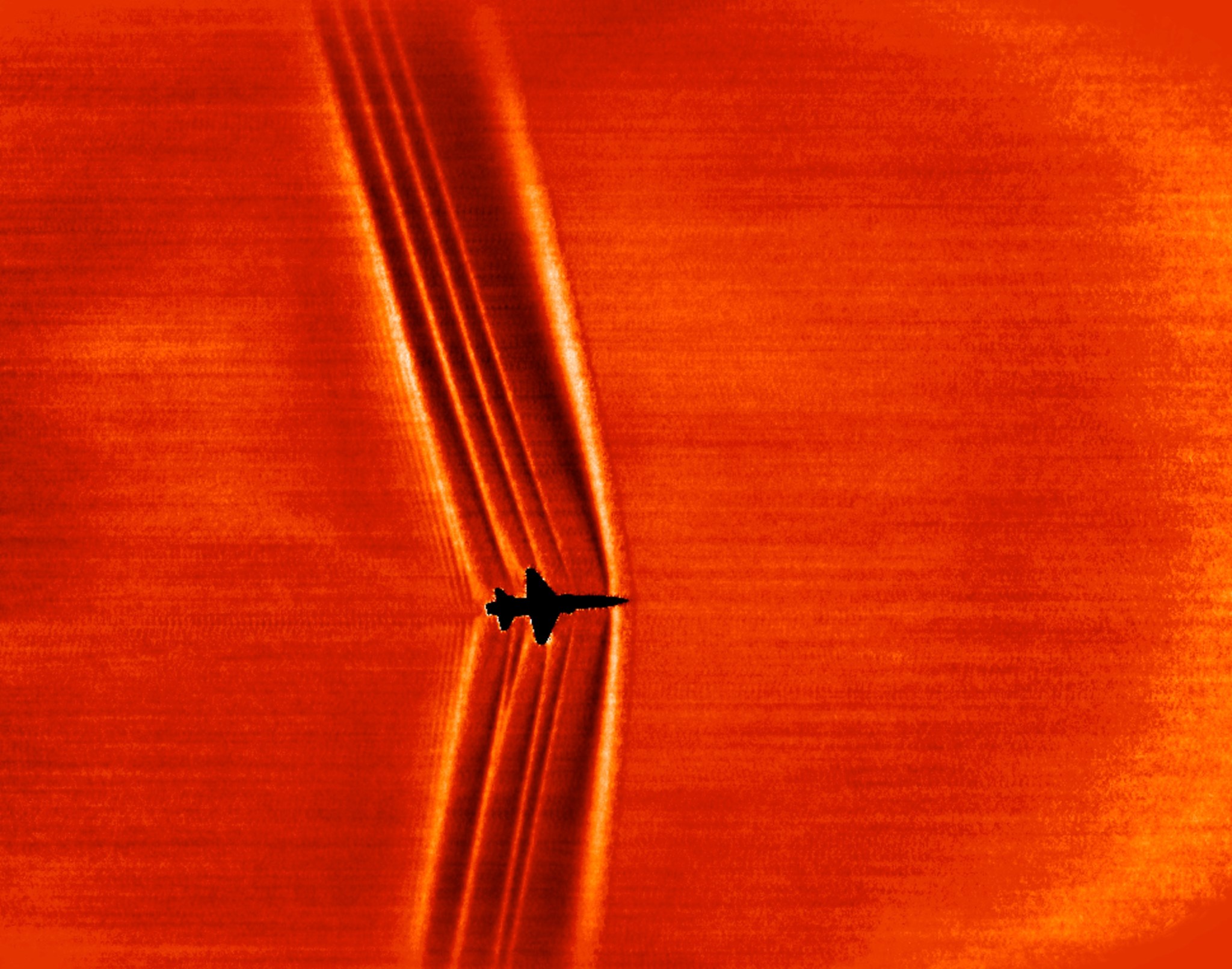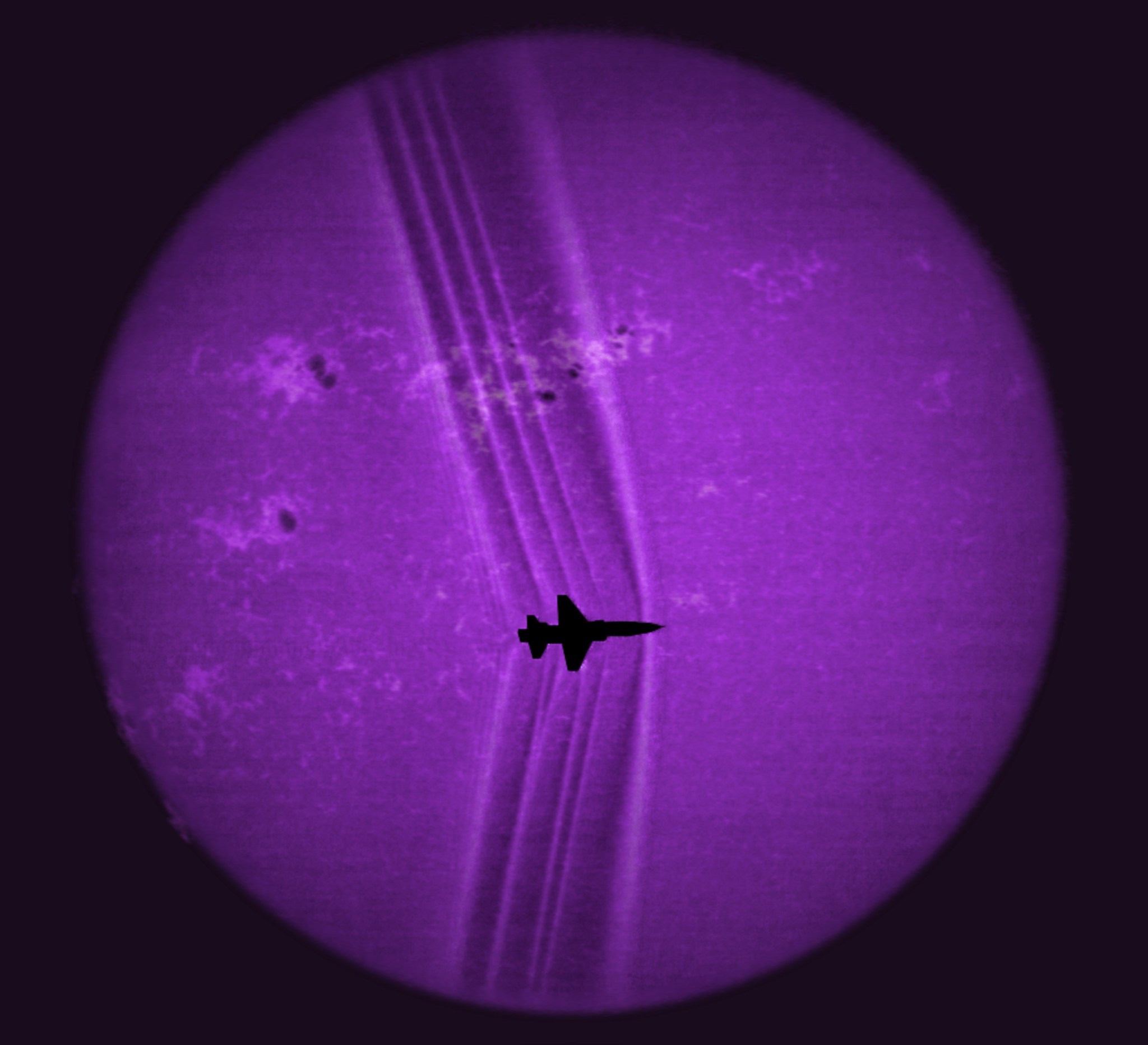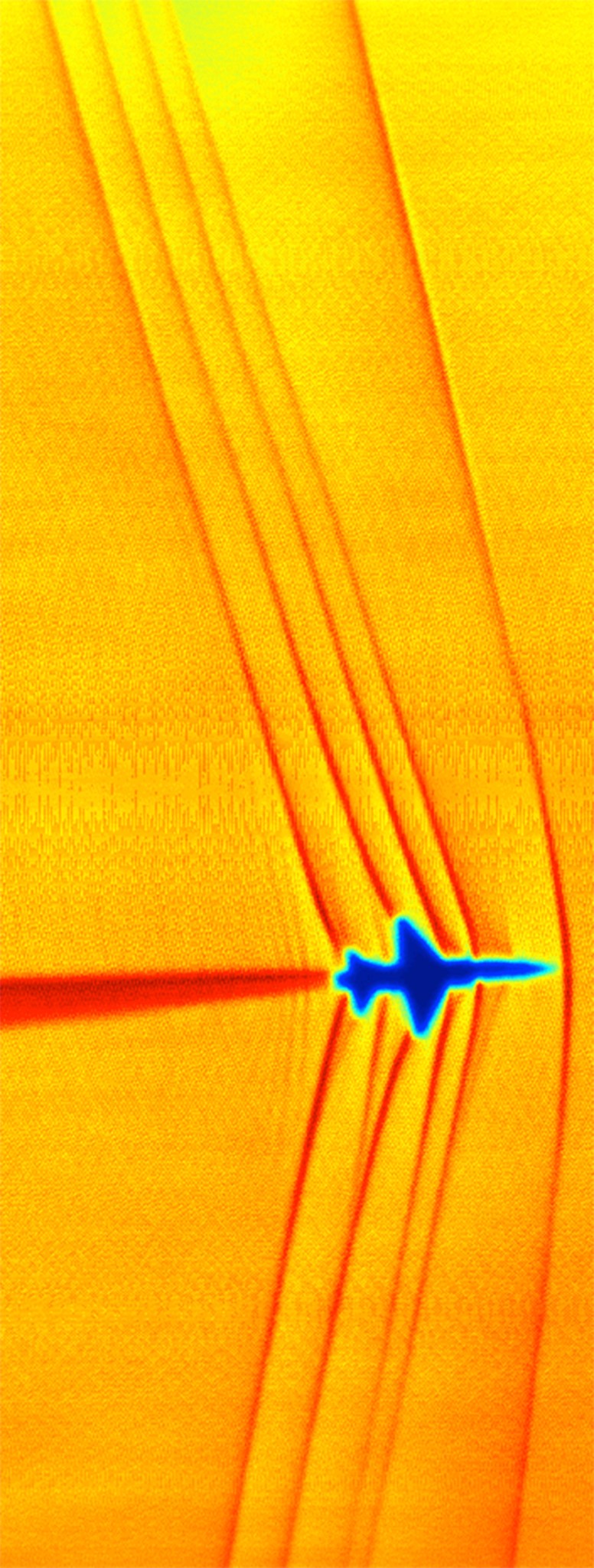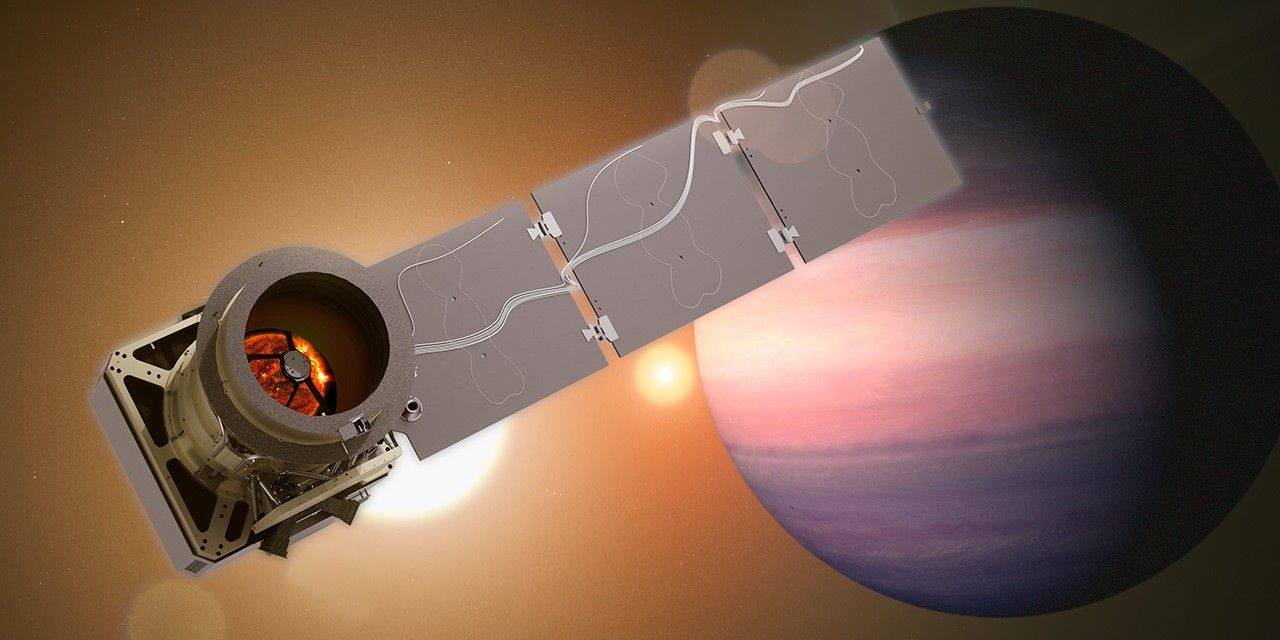In the wake of recent success with air-to-air schlieren photography using the speckled desert floor as a background, researchers at NASA’s Armstrong Flight Research Center, Edwards, California, are now looking to the heavens for backgrounds upon which to capture images of supersonic shock waves using ground-based cameras. A bright light source and/or speckled background – such as the sun or moon – is necessary for visualizing aerodynamic flow phenomena generated by aircraft or other objects passing between the observer’s camera and the backdrop. This patent-pending method, made possible by improved image processing technology, is called Background-Oriented Schlieren using Celestial Objects, or BOSCO.
Flow visualization is one of the fundamental tools of aeronautics research, and schlieren photography has been used for many years to visualize air density gradients caused by aerodynamic flow. Traditionally, this method has required complex and precisely aligned optics as well as a bright light source. Refracted light rays revealed the intensity of air density gradients around the test object, usually a model in a wind tunnel. Capturing schlieren images of a full-scale aircraft in flight was even more challenging due to the need for precise alignment of the plane with the camera and the sun.
Until recently, ground-based schlieren systems, using the sun’s edge as a light source, have produced adequate results, but only two observations of each shockwave could be made as the target aircraft crossed the left and right sides of the sun. Armstrong engineer Edward Haering, originator of the BOSCO concept, noticed that the shockwaves also distorted any visible sunspots. Although the unfiltered solar disk is relatively featureless, astronomers have long known that a calcium-K (CaK) optical filter may be used to reveal the granulated texture of the sun’s chromosphere.
“Using this naturally speckled background,” said Haering, “we could make hundreds of observations of each shockwave, greatly increasing the acuity of the camera system.”
Researchers at Armstrong and NASA’s Ames Research Center at Moffett Field, California, have developed new schlieren techniques based on modern image processing methods. Shock waves, represented by distortions of the background pattern in a series of images, are accentuated using special mathematical equations. This method requires only simple optics and a featured background, that is one with a speckled appearance such as the cratered lunar surface or the mottled appearance of the sun when viewed through certain filters, such as the CaK filter.
One recent demonstration of this technique was called Calcium-K Eclipse Background Oriented Schlieren (CaKEBOS). According to Armstrong principal investigator Michael Hill, CaKEBOS was a proof of concept test to see how effectively the sun could be used for background oriented schlieren photography.
“Using a celestial object like the sun for a background has a lot of advantages when photographing a flying aircraft,” Hill said. “With the imaging system on the ground, the target aircraft can be at any altitude as long as it is far enough away to be in focus.”
Researchers found the ground-based method to be significantly more economical than air-to-air methods. Merely eliminating requirement for an airborne camera platform reduced operational costs and complexity, as did the use of off-the-shelf equipment.
“The CaKEBOS imaging system was very simple, consisting of consumer grade astronomy equipment we had from previous tests,” said Hill. He further noted, “Someone could probably build a system that would get similar results for around $3000.”
The Air Force Test Pilot School at Edwards provided a supersonic T-38C to serve as a target aircraft. Air Force test pilots Maj. Jonathan Orso and Col. Glenn Graham worked with NASA in planning how to precisely align the jet’s flight path to capture the schlieren images. The aircraft needed to be in the right place at the right time in order to eclipse the sun relative to the imaging system on the ground. The pilots had to hand fly the airplane to hit a specific point in the sky to within approximately 300 feet, while travelling faster than the speed of sound. This had to be accomplished within a two-minute window as the sun’s relative position in the sky changed due to Earth’s rotation.
“We would like to try to use the BOSCO system on things other than aircraft,” Hill said. “We could potentially perform schlieren photography on anything we could get between our camera and the sun.”
The background oriented schlieren technique shows not only supersonic shock waves, but all density changes including wing vortices and engine plume effects. Future research may involve imaging subsonic aircraft flow fields and those generated by wind turbines or vehicles moving along a highway, using an upgraded imaging system to capture higher resolution images.
“Each of these techniques, using the desert floor or the speckled Sun, imaging from the ground or from a nearby aircraft, has its strengths and limitations. We plan on combining elements of all these to visualize the complex flow patterns on future aircraft that will allow quiet supersonic overland flight for all,” Haering said.




































